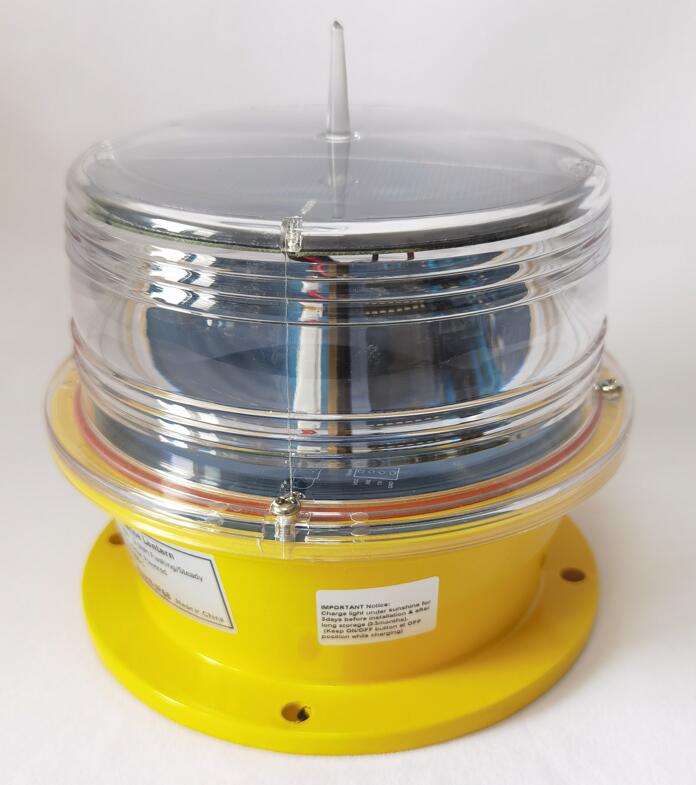Solar Aviation Light: Illuminating the Future of Airspace Safety
In the realm of aviation safety, innovation and sustainability are no longer optional—they are essential. One such innovation that has taken the industry by storm is the solar aviation light. Combining renewable energy with cutting-edge technology, these lights are transforming how we mark obstacles and ensure safe navigation for aircraft. From remote wind farms to towering urban skyscrapers, solar aviation lights are proving to be a game-changer. In this article, we’ll explore the features, benefits, and applications of solar aviation lights, and why they are the future of airspace safety.
What Are Solar Aviation Lights?
Solar aviation lights are self-sustaining lighting systems designed to mark tall structures that could pose a hazard to aircraft. Powered entirely by solar energy, these lights eliminate the need for external power sources, making them ideal for remote or off-grid locations. They are equipped with high-intensity LEDs and advanced battery systems to ensure reliable operation, even in challenging conditions. By meeting stringent aviation safety standards, solar aviation lights provide a sustainable and efficient solution for obstacle marking.
Key Features of Solar Aviation Lights
The solar aviation light is packed with features that make it a standout choice for modern aviation safety. Here’s what sets it apart:
Solar-Powered Operation: Harnessing energy from the sun, these lights are eco-friendly and cost-effective, reducing reliance on traditional power sources.

High-Intensity LEDs: Bright and energy-efficient, the LEDs ensure maximum visibility for pilots, even in low-visibility conditions like fog, rain, or darkness.
Durability and Weather Resistance: Built to withstand harsh environments, solar aviation lights are resistant to UV exposure, corrosion, and extreme temperatures.
| Solar Aviation Light |
| Solar Aviation Lights |
Automatic Operation: Equipped with light sensors, these lights turn on at dusk and off at dawn, ensuring consistent performance without manual intervention.
Compliance with Aviation Standards: Solar aviation lights meet FAA, ICAO, and other international regulations, making them a trusted choice for obstacle marking.
Low Maintenance: With their robust design and long-lasting components, these lights require minimal upkeep, saving time and resources.
Applications of Solar Aviation Lights
The versatility of solar aviation lights makes them suitable for a wide range of applications, including:
Wind Turbines: As wind farms expand into remote areas, solar aviation lights provide a reliable and sustainable way to mark turbines, ensuring they are visible to low-flying aircraft.
Communication Towers: Often located in isolated or elevated areas, communication towers benefit from the self-sustaining operation of solar aviation lights.
Skyscrapers and High-Rise Buildings: In urban environments, these lights help mark tall buildings, preventing collisions with helicopters and other low-altitude aircraft.
Bridges and Power Lines: Tall bridges and high-voltage power lines use solar aviation lights to ensure they are visible to pilots, particularly in areas with heavy air traffic.
Offshore Structures: The durability and solar-powered operation of these lights make them an excellent choice for marking offshore oil rigs and other marine structures.
Benefits of Solar Aviation Lights
The solar aviation light offers numerous advantages, making it a preferred choice for modern aviation safety:
Eco-Friendly Solution: By using solar energy, these lights reduce carbon emissions and reliance on non-renewable energy sources.
Cost-Effective: With no need for external power sources and minimal maintenance requirements, solar aviation lights significantly reduce operational costs.
Reliability in Remote Locations: Their self-sustaining design makes them ideal for marking structures in areas where access to electricity is limited or nonexistent.
Enhanced Safety: The bright, high-intensity LEDs ensure that structures are visible to pilots, reducing the risk of collisions and enhancing overall aviation safety.
Regulatory Compliance: These lights meet international aviation standards, ensuring that structures comply with safety regulations.
Technological Advancements in Solar Aviation Lights
The solar aviation light represents the latest advancements in obstruction lighting technology. Key innovations include:
Improved Solar Panels: Modern solar panels are more efficient, capturing more sunlight and storing energy more effectively.
Advanced Battery Systems: High-capacity batteries ensure consistent operation, even during periods of low sunlight.
Smart Lighting Controls: Integrated sensors and controls optimize performance, adjusting brightness based on ambient light conditions and conserving energy.
The Global Impact of Solar Aviation Lights
The adoption of solar aviation lights is growing worldwide, driven by the need for sustainable and reliable obstacle marking solutions. As air traffic increases and urban landscapes become more crowded, these lights play a critical role in ensuring safe navigation for aircraft. From remote wind farms to bustling cities, solar aviation lights are making the skies safer for everyone.
The solar aviation light is more than just a lighting solution—it’s a testament to how innovation and sustainability can work together to enhance safety. By harnessing the power of the sun, these lights provide a reliable, eco-friendly, and cost-effective way to mark obstacles and protect airspace. Whether you’re managing a wind farm, constructing a skyscraper, or maintaining communication towers, the solar aviation light is an essential tool for modern aviation safety.
As the world continues to prioritize sustainability and technological advancement, the solar aviation light stands out as a shining example of progress. By choosing this innovative solution, you’re not just investing in safety—you’re contributing to a greener, safer future for aviation.
